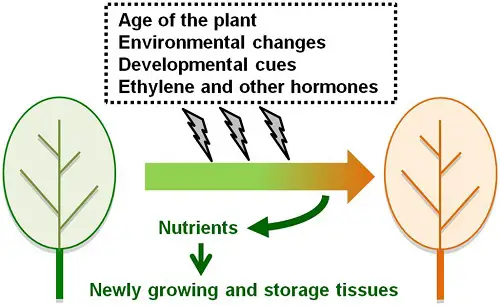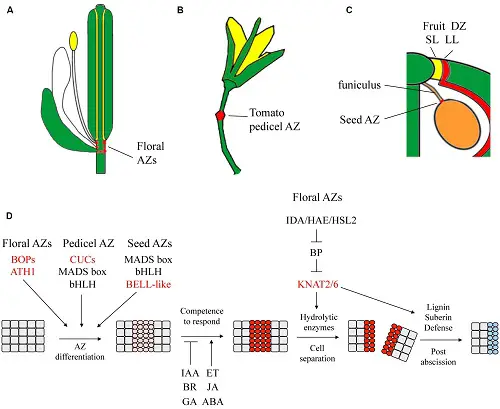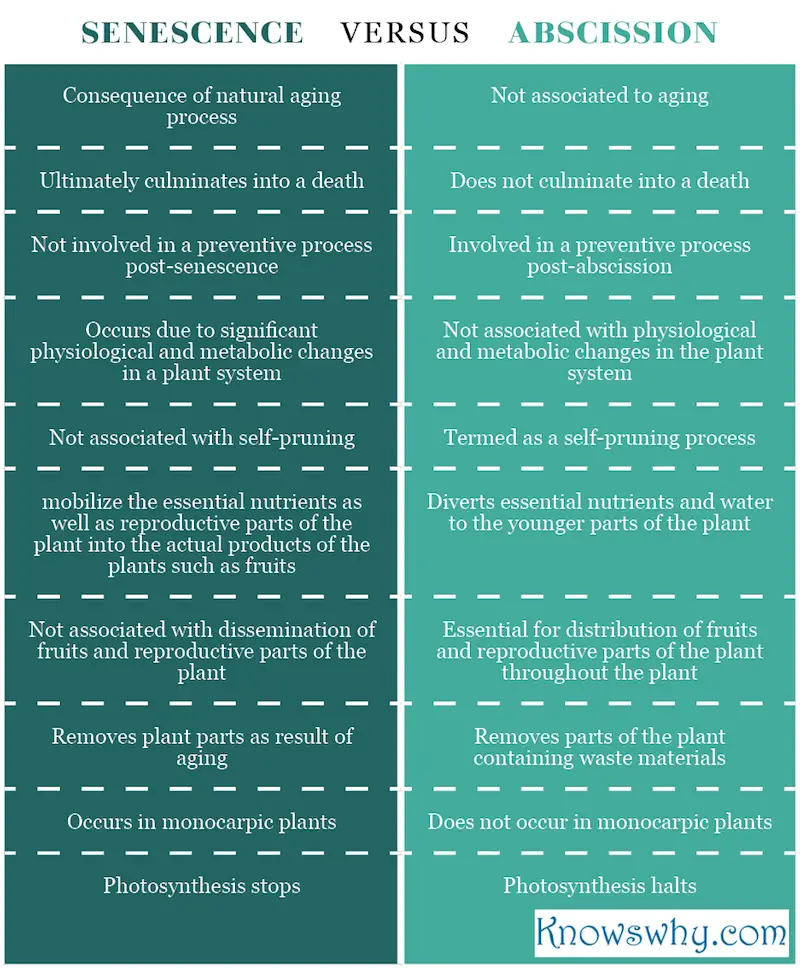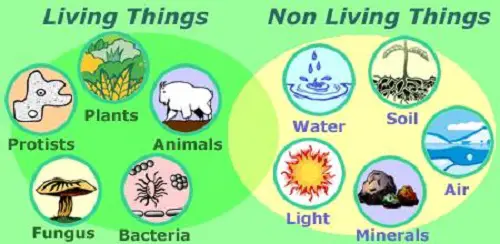It is always mistaken that plants are a non-living species. However, it is not true scientifically. Just like any living species on the earth, plants do have a life in a true sense meaning they grow, age and ultimately die. Ageing is a phenomenon where organelle, physio-chemical and cellular changes occur throughout the life of a plant.
SENESCENCE
The natural phenomenon of ageing propagates into a process called senescence and finally into a terminal life process that culminates to death. The most appropriate definition of the senescence is “natural progressive break down process leading to the death of a living entity.”

The unique feature in this process of senescence that eventually leads to the termination of life is catabolic metabolism processes which become non-repairable at some point in the process. Senescence can occur in the whole plant as well as it can be organelle and/or cell specific. Senescence is closely associated with the phenomenon of aging. Aging leads to senescence. Some of typical examples of senescence include (but are not limited to); death of a whole wheat plant following a complete fruit formation and leaf shedding by a coconut tree.
Types of Senescence
Scientifically, senescence has been classified in following categories based on their role in the life process of a plant.
- Whole plant senescence
The plants that produce their products such as; flower and/or fruit once in their entire life are termed as monocarpic plants in botanical terms. The examples of such plants include (but are not limited to), wheat, cabbage, bamboo etc. The senescence associated with these plants is usually referred to as Whole Plant Senescence.
- Shoot senescence
The shoots of some specific plants with characteristic underground features such as; rhizomes lead to death every year following the development of flowers and fruits. However, the underground organelles such as; stems and roots survive the senescence leading them to produce new shoots. The examples of plants associated with shoot senescence are (but not limited to), banana, ginger etc.
- Sequential Senescence
Shoots and branches of many plants keep on producing new leaves and buds, while some of the older branches and associated leaves go through a process of senescence and ultimately die. This type of senescence is usually referred to as Sequential Senescence. Some of the typical examples of plants include (but are not limited to), Eucalyptus, Pine etc.
- Simultaneous or Synchronous senescence
Deciduous trees are the ones who shed all the leaves and develop new ones in autumn and spring respectively. The of shedding and regeneration of leaves by these plants is termed as synchronous or simultaneous senescence.
Some specific scientific reasons behind the occurrence of Senescence in plants
- Premature loss in/failure of; genetic materials/photosynthesis lead to leaf senescence.
- Hampered synthetic processes or changes in metabolism propagates into cellular dysfunctions.
- Shortage of functional nutrients
- Shorter daylight conditions culminate into a senescence associated with flowers and leaves.
- Abrupt and untimely deterioration of food/nutrient supply and associated cellular functions.
- In some plants, the process of senescence is hormone dependent (e.g. abscisic acid and ethylene).
ABSCISSION
The process that leads to the shedding/separation of essential parts of the plant i.e. leaves, flowers, and fruits is termed as abscission. The process of separation/shedding propagates into another sequential process necessary for the normal life of a plant. These processes include; sealing off vascular system to prevent water and/or nutrients loss and, also to prevent from bacterial and/or fungal infections to the plant.

The phenomenon of abscission is a very characteristic feature of deciduous trees. These plants shed all their leaves in autumn (fall). Gradual abscission is distinct feature of evergreen plants wherein the shedding of older leaves and generation of new leaves occur continuously round the year. Most interestingly, almost all herbaceous species plants retain their leaves in very dry conditions even after their death.
DIFFERENCE BETWEEN SENESCENCE AND ABSCISSION
- Senescence is a process which ultimately leads to death. Abscission is no associated with the termination of a plant life.
- Senescence is closely associated with the phenomenon of plant aging which culminated into a death. Abscission is not associated with the aging.
- Senescence is not involved any kind of a preventive process post-senescence. Abscission is involved in a preventive process in which it prevents the plant from water/nutrients loss and bacterial/fungal infections post-abscission.
- The process of senescence occurs due to physiological and metabolic changes in the plant. Plant undergo abscission to survive in harsh conditions i.e. external as well as internal.
- Abscission is usually termed as a self-pruning process. Senescence is not a self-pruning process
- Senescence helps to mobilize the essential nutrients as well as reproductive parts of the plant into the actual products of the plants such as fruits. Abscission is involved in the diversion of essential nutrients and water to the younger parts of the plant.
- Abscission is essential in the spreading/distribution of fruits and vegetative parts of the plant throughout the plant. Senescence is not involved in any such functions.
- Senescence is involved in the removal of plant parts as result of aging. Abscission process is involved in the removal of plant parts which are not necessary to the plant for its normal function.
- Senescence can occur in monocarpic plants, while abscission does not occur in these plants.
- In senescence the process of photosynthesis stops completely, while in abscission the process of photosynthesis does not stop.
Summary of the differences in both the enzymes is provided in Table 1 below

Author: Roh Mulic
Dr. Mulic is an experienced professional with years of biomedical and pharmaceutical research background. He is a Ph. D. holder with an excellent track record of quality international publications.











Leave a Reply